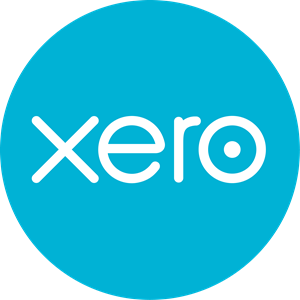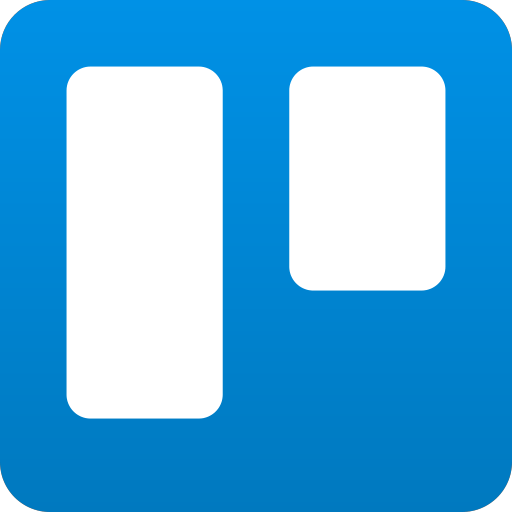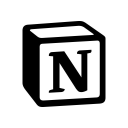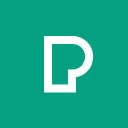We Built A $180K/Year Learn-To-Code Community
Hello! Who are you and what business did you start?
Hello! I’m Matt Studdert, and I’m the founder of Frontend Mentor. We are an online learning community that helps people improve their front-end coding skills by building projects. Instead of providing learning tutorials, we provide professionally designed challenges to help our community gain real-life experience building websites and web apps.
We use a freemium business model. People can choose to take our free challenges, which are typically smaller, slightly less detailed, and come with JPG images of the designs. Or they can choose to subscribe to our PRO membership which gives them access to our premium challenges and the design files for our free challenges, along with a few extra paid features on the platform.
People who subscribe to PRO are often either looking to become a professional front-end developer or are already looking to build more complex projects to improve their skills faster.
Today, we have over 200,000 members on the platform and grow at over 16,000 new members per month. Of those 200,000+ members, we have 1,500+ paid subscribers generating over $15,000 MRR.

What's your backstory and how did you come up with the idea?
My background is actually in sports, exercise, and nutrition! I played a lot of sports growing up—basketball in particular. When I went to university, I studied Sport & Exercise Science. After uni, I set up a personal training business in my hometown of Cambridge.
Choose the path that’s right for you. If you try to fit into someone else’s version of what an entrepreneur should be, you could easily go on a journey that you hate. The goal is to love the journey and enjoy the process!
I enjoyed running my own business, but personal training wasn’t the right career for me. I enjoyed staying active and eating well, but I realized it wasn’t my passion. I still enjoyed a beer and a pizza a bit too often!
As soon as I had that realization, I knew I needed to find a new path. But all the ideas I was having were for online businesses. I didn’t have the money to get someone else to build something, so I decided to self-teach.
I soon came across a company called General Assembly and decided to enroll in their full-time 3-month Bootcamp. After finishing the course, I took a job as a developer. Shortly after, I decided to go back to GA in the evenings and weekends as a teaching assistant to boost my skills further and earn some extra money. After a year or so, I became one of their part-time lead instructors teaching their 10-week part-time front-end course.
It was through this teaching experience that the idea for Frontend Mentor came to me. At this point, I had been trying (and failing miserably) to launch a new fitness-related online business. I had been building an app for over half a year and still hadn’t launched anything, validated the idea, or even figured out a route to market. Out of frustration, I challenged myself to ship an unrelated idea in a couple of days.
The first idea that popped into my head was a front-end resource list for my students! Not original, I know, but it was something that helped my students. I constantly shared the same front-end resources with them, but I had no central resource to point them to. So I decided to create it.
After a couple of days, I had created my resource list and shared it with my network on LinkedIn, my students in General Assembly’s Slack channel, and the various (brand new) Frontend Mentor social channels.
After thinking more about typical problems my students had, I came up with another idea. A common question my students had when completing our Front-end Web Development 10-week part-time course was, “Where can I go to practice building projects and build up a portfolio?”.
I was never satisfied with my answer of “Build your own projects or use Dribbble”. No website existed that provides developers with professional designs complete with starter code and optimized assets, which I thought was crazy. It would remove so much friction and allow developers to focus on writing code with the additional benefit of creating beautiful-looking projects that would look great in any portfolio.
So this is how Frontend Mentor was born!
Take us through the process of designing, prototyping, and manufacturing your first product.
The very first version of Frontend Mentor looked awful. I had challenged myself to launch as quickly as possible, and as you can see, I didn’t spend much time thinking about how it looked.

That early version proved my hypothesis that people would want to complete realistic challenge projects and share their results with their network. That’s all I was looking to do.
Once I knew people liked the concept, a designer friend offered to pull together some simple branding and initial template designs as a favor. After a day’s work together, we had the Frontend Mentor brand and some designs ready!
I decided to keep the new-look version of the site as simple as possible. It was still a static site with authentication, solution submission, comments, etc. To help bridge the gap between what the site offered and what the community wanted, I decided to create a Frontend Mentor Slack community.
Here’s how the redesigned homepage looked;

Looking back, creating a Slack community to run alongside the site was one of the best decisions I made. It helped shape the first version of the platform and has grown into a vibrant community with over 70,000 developers helping each other out!
Everything we build is still a direct result of conversations that happen within the community. Chatting to community members every day and seeing the conversations happening gives a fantastic insight into what we need to change to help improve our platform.
Describe the process of launching the business.
When I launched the new-look version of Frontend Mentor, I went down the same channels as when I first launched the site as a resource list. I also published articles on dev.to and Hackernoon, and posted a Show HN on Hacker News.
My goal at first wasn’t to bring in loads of new users. I wanted a steady stream of new members signing up, but I wanted to focus on solving their problems and refining what I had before promoting the platform a lot. I also wanted to build more of a community and audience. Because of this, I saved my Product Hunt launch for a later date.
I didn’t have a business model at the beginning. I aimed to create a helpful learning resource for developers. I knew that if I did that, there would be opportunities to monetize it and turn it into a sustainable business down the line.
By this point, I had quit my full-time job as a developer. My teaching work at General Assembly and freelance gigs kept me afloat and allowed me to focus more on Frontend Mentor. Cutting my work hours and contracting was a massive help in the early days. Working a full-time job while trying to build Frontend Mentor would have been much harder!
Seeing as I didn’t have a business model, this was a risk. But my income was enough to cover my costs plus a little extra, and I trusted myself to find the right model in the not too distant future. These types of decisions are situation-dependent.
After launching the new-look static site for Frontend Mentor and the Slack community, I started work on the platform. The platform would be complete with user authentication, solution submissions, commenting/feedback, and a few other features. It was during this time that I found my co-founder, Mike.
I met Mike through our teaching work at General Assembly. He saw the work I was doing and was extremely interested in the project. He offered to help on a casual basis at first. I’m most comfortable on the front-end, so having Mike offer his help as a back-end developer was perfect!
Based on community feedback, we built and launched the first version of the platform. We kept the static site on the main domain and had the platform on a “beta” subdomain at first. This allowed us to divert a steady stream of traffic and sign-ups to the platform while we refined it and fixed bugs.
Once we were happy with the platform, we put it on the main domain, allowing sign-ups to jump overnight. We then waited a few more months to let the community grow a bit before launching on Product Hunt.
From quietly launching the platform in April 2019 to doing a more extensive, “official” launch was 11 months. In hindsight, this was longer than it should have been. We didn’t move the platform onto the primary domain for 5-months after launching, and the Product Hunt launch was another 5-months after that. I’m not too hard on myself about it as neither Mike nor I was full-time on the project, so things moved slower.
You need to find the right cadence for you and your team. Had we rushed things, we may have experienced burnout, added more bugs to the code, or built the wrong features. Everything is a tradeoff. Mike and I are most comfortable with a steady, consistent work cycle. This means we don’t rush releases and only move onto the next new thing once we’re happy everything we’ve already built is working as expected. Receiving good feedback and adoption rates from the community is a key part of measuring success for any new feature release.
The Product Hunt launch went well! We ended up 3rd product of the day, saw a lot of traffic and sign-ups, received some fantastic feedback, and most importantly, got on the radar of several prominent industry blogs and newsletters. One particular pleasant surprise was seeing Frontend Mentor featured in a CSS-Tricks article written by none other than Chris Coyier himself!
Here’s a graph showing a couple of the early inflection points in new sign-ups;

My primary lesson learned from our launch and running Frontend Mentor to this point is that there are so many ways you can go about anything to do with running your company. You need to find what works for you.
We took the slow and steady approach and only launched publicly when we were happy that our community was delighted with the offering. We had had several “launches” before the Product Hunt launch, but we chose to delay the PH launch as we knew that was a big opportunity, and we didn’t want to waste it.
We also don’t subscribe to the hustle culture and couldn't care less about growth at all costs. We focus on building the right things based on our community’s needs, and we don’t set hard deadlines or work schedules. Creating your own business means you can create your perfect universe, and for us, that means a steady, flexible work schedule and plenty of meaningful engagement with our community.
Think deeply about what you want to get out of your venture. Then base all your decisions on that vision of the perfect world you want to create for yourself and anyone else in the business.
Since launch, what has worked to attract and retain customers?
Our best growth channel has been word of mouth. When people complete our challenges, we make it easy for them to share their solutions on social media. Easy sharing helps them showcase their work to their network and get feedback from others. People are so proud of the projects they’ve built because they look professional that they’re happy to share their work with others. A book that sums this up perfectly is Badass: Making Users Awesome by Kathy Sierra. This means the more people there are completing projects, the more people there are sharing their work, which is a massive growth flywheel to have in place.
We also have many developers streaming themselves completing our projects on YouTube and Twitch. These videos drive lots of traffic and are a perfect way to introduce people to our platforms and give them an idea of how it works! I’ve built good relationships with several YouTubers, and this is something I’ll continue to do.
Something we’re also starting to do is collaborate with other companies. One collaboration I did was with the Zero to Mastery learning community. I created a three-part workshop for their platform using a Frontend Mentor challenge, and we published the first episode on YouTube. I’ve got multiple collaborations in the pipeline, which I’m excited to share in the coming months!
I’m also trying to write more (hence this article!) and share our work on Frontend Mentor. I recently wrote an article for the Stack Overflow blog, and guest posting on other blogs is something I’ll do more of.
One thing I’ve really enjoyed is being a guest on podcasts. Couples I’ve been on are The Frontend Podcast and the Stack Overflow podcast. I enjoy talking to others about what we’re doing with Frontend Mentor, so this is another area of focus going forward.
We haven’t experimented with ads or spent a lot of time on SEO. This is something we’ll focus on in time, but our main focus is to help our community achieve its goals. We have an inherently shareable solution, so the more we can help people succeed, the more they’ll spread the word.
How are you doing today and what does the future look like?
As of writing this, we’re at $15K MRR, with the last three months' total revenue being over $17K. Both Mike and I are now full-time on the business, and we’ve got multiple contractors working with us in various roles. Revenue has typically been growing 10-20% month over month, which is nice and steady. Our churn rate is too high at the moment (~15%), so that’s something we’re focused on improving. But our numbers are showing nice consistent growth.

We don’t have any customer acquisition costs, and our margins are high, so we can spend the money on supporting ourselves and paying our contractors to help improve the platform.
We launched the PRO subscription part to our business in August 2020, so it's coming up a year since we started monetizing the site. I’m looking forward to hopefully seeing some of our yearly subscribers renewing when it comes time!
Our traffic numbers have been showing a consistent increase over time. Here are a couple of screenshots from our analytics dashboard. The first is of the last 30-days at the time of writing.

This one is our traffic over time since we first added Fathom to our site;

Planning for the future is something I love doing. There are so many directions we could take Frontend Mentor, and they’re all exciting! Once we’ve improved the platform a little more and made some updates to the PRO subscription, we’ll turn our attention to some B2B channels. We still need to do some discovery work around what makes sense for our first move into B2B, but there are many fascinating possibilities!
Through starting the business, have you learned anything particularly helpful or advantageous?
My main lesson has been not to be scared to forge your own path. We’ve turned down investment, stuck to a steady, consistent work schedule without sacrificing our lifestyles, and made sure the business is a pleasure to work in and not a prison of our own making. We’ve done all of these things because we have a clear idea of what our perfect business looks like. When you start your own company, you get to choose what life you want to live. It’s a very personal decision. As long as you’re clear about the tradeoffs and where you want to be, your choices will be easier to make.
Because we focus on achieving a good work-life balance, we need to be efficient with our time. We very rarely have synchronous meetings and prioritize deep work over constant communication. We trust each other to get on with the work we’ve agreed to do.
One major productivity lesson I’ve learned is to block out chunks of time on your calendar for your tasks instead of writing to-do lists. I find having time allocated to specific tasks focuses me much more. Whereas just having a to-do list led me to constantly switch between tasks and lose track of how long each one has taken.
What platform/tools do you use for your business?
- Fathom Analytics - Mike and I are both quite privacy-focused people. Both for ourselves and our community. Therefore, we decided to use a privacy-first analytics tool. I love what Jack Ellis and Paul Jarvis are creating with Fathom. They seem to have very similar ideals to us, and we’re pleased to support them by using their incredible product!
- Chargebee - We use Chargebee to manage our subscriptions with Stripe and PayPal as our payment gateways. It’s a brilliant solution, and we’re delighted with our choice.
- ProfitWell - We’ve integrated Chargebee with ProfitWell to get deeper insights into revenue trends, which has been very helpful. We’re just using the free version, but even that provides a lot of helpful information!
- Founder Summit Remote - This is a brilliant community of mostly self-funded founders building calm, sustainable companies. There are so many incredible entrepreneurs ready to help each other out, and it’s a great place to hang out.
What have been the most influential books, podcasts, or other resources?
- Company of One by Paul Jarvis - Made me question the growth at all costs mentality and rethink how I could run a business
- Lost and Founder by Rand Fishkin - Provided a true insight into running a company and the various pitfalls that can appear
- It Doesn’t Have to Be Crazy at Work by Jason Fried and David Heinemeier Hansson (slightly hesitant to recommend this after the recent Basecamp announcements, but it’s still a good book) - Although DHH and Jason Fried seem to have gone back on everything they said in this book, it still paints a vision of a company I’d like to run
- Essentialism by Greg McKeown - A lot of what you think is essential isn’t
- The Almanack of Naval Ravikant by Eric Jorgenson and Tim Ferriss - Made me think deeply about what I want from life
- Happy Sexy Millionaire by Steven Bartlett - Showed me to focus on the present and not tirelessly chase arbitrary milestones
- Life Profitability by Adii Pienaar - Another book that made me think about the kind of business I want to run
- Zero to Sold by Arvid Kahl - Granular insights into running a bootstrapped business through to an exit
Advice for other entrepreneurs who want to get started or are just starting?
My main one is a massive cliche, and it’s just to start. The first version of Frontend Mentor took less than two days to create. From there, it’s all been about constant iteration based on feedback from the community. If I had tried to launch the platform as a more polished offering, I could have easily spent half a year building the wrong thing and give up before launching. Seeing people interact with something you’ve created is such a huge motivator that you should launch something...anything, and then go from there.
As you iterate, be sure to talk to your customers and validate your ideas before implementing them. This is another fairly standard piece of advice, but I can’t emphasize its importance enough. If you’re going down the self-funded route, this is especially true. Resources will be limited, so you need to spend time working on the highest impact tasks.
And finally, don’t feel like you need to adhere to the typical portrayal of the overworked, stressed, hustling entrepreneur. Choose the path that’s right for you. If you try to fit into someone else’s version of what an entrepreneur should be, you could easily go on a journey that you hate. The goal is to love the journey and enjoy the process!
Are you looking to hire for certain positions right now?
We’re not hiring right now, but we’ll be looking for a part-time (10-20 hrs/week) contract Head of Community soon. Our community is growing rapidly, and it would be amazing to have someone focused on community development and success.
Where can we go to learn more?

Download the report and join our email newsletter packed with business ideas and money-making opportunities, backed by real-life case studies.

Download the report and join our email newsletter packed with business ideas and money-making opportunities, backed by real-life case studies.

Download the report and join our email newsletter packed with business ideas and money-making opportunities, backed by real-life case studies.

Download the report and join our email newsletter packed with business ideas and money-making opportunities, backed by real-life case studies.

Download the report and join our email newsletter packed with business ideas and money-making opportunities, backed by real-life case studies.

Download the report and join our email newsletter packed with business ideas and money-making opportunities, backed by real-life case studies.

Download the report and join our email newsletter packed with business ideas and money-making opportunities, backed by real-life case studies.

Download the report and join our email newsletter packed with business ideas and money-making opportunities, backed by real-life case studies.























